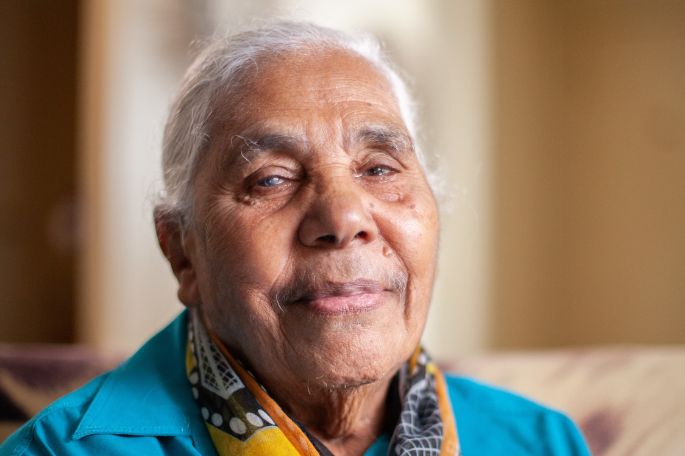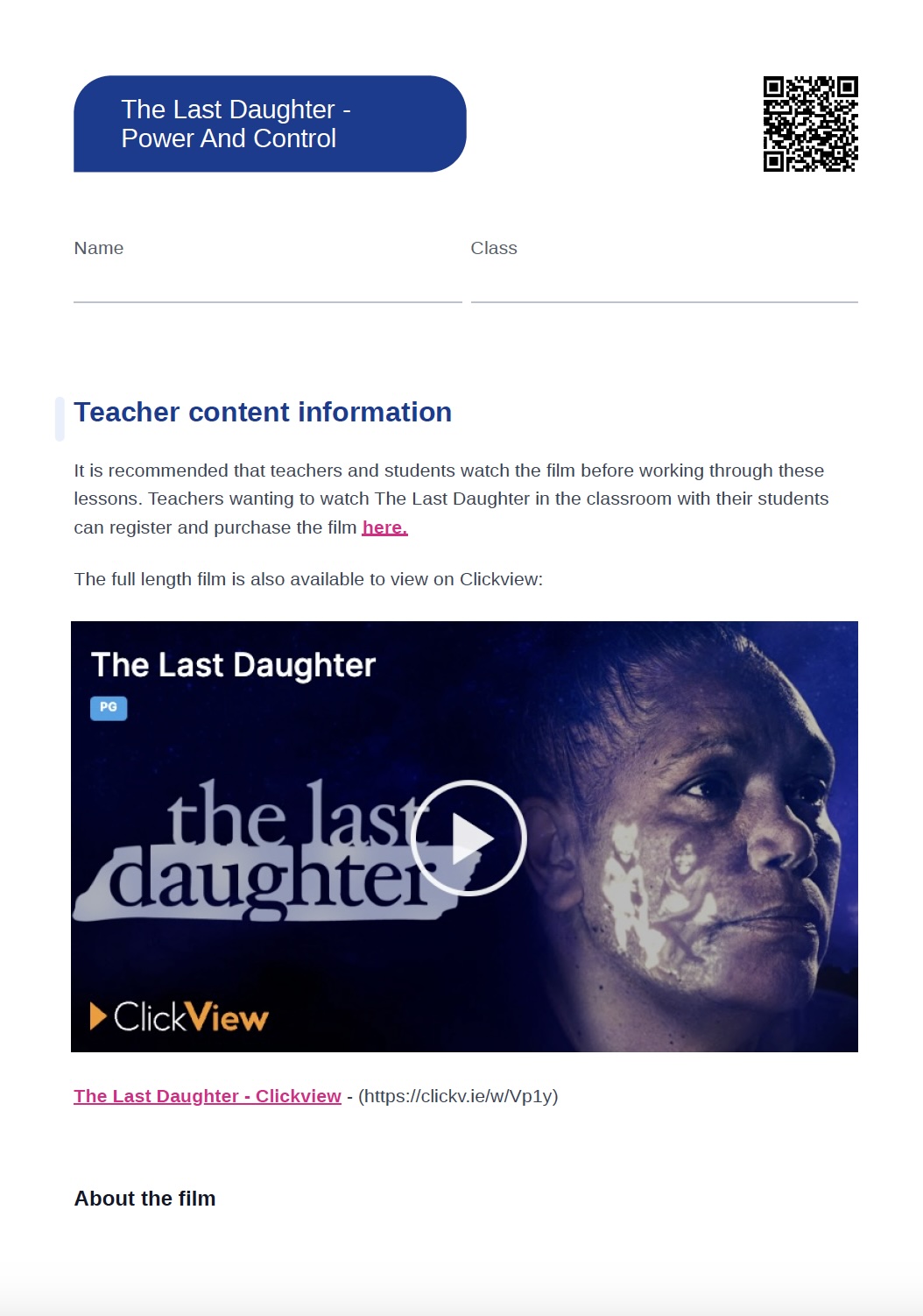Lesson summary
In this lesson, students consider the rights and treatment of Aboriginal and Torres Strait Islander peoples during the 1970s. Students will connect this learning with the story of Nan Brenda, an Aboriginal woman whose children were taken from her, through clips from the feature-length documentary, The Last Daughter.
Learning intentions:
Students will...
- examine power dynamics in reference to government interventions and the forcible removal of children
- apply an understanding of power dynamics to Brenda Matthews’ family’s experience.
Success criteria:
Students can...
- explain how power and control were exercised over Aboriginal and Torres Strait Islander peoples through government policies
- identify and explain how Brenda’s family regained power and control over an experience that otherwise disempowered them.
Lesson guides and printables
Curriculum links
Select your curriculum from the options below.
Lesson details
Curriculum mapping
Australian Curriculum (v9.0) content descriptions:
English:
Students learn to:
- analyse and evaluate how people, places, events and concepts are represented in texts and reflect contexts (AC9E10LY01)
- analyse representations of individuals, groups and places and evaluate how they reflect their context in literary texts by First Nations Australian, and wide-ranging Australian and world authors (AC9E10LE01).
General capabilities: Literacy, Personal and Social Capability, Intercultural Understanding, Critical and Creative Thinking
Syllabus outcomes: EN5-8D
Cross-curriculum priority: Aboriginal and Torres Strait Islander Histories and Cultures.
Relevant parts of Year 9 & 10 English achievement standards:
By the end of Year 10, students analyse and evaluate representations of people, places, events and concepts, and how interpretations of these may be influenced by readers and viewers.
Resources required
- Access to The Last Daughter
- Device capable of presenting audio and video to the class
- Student laptops or access to schools’ devices (laptops, iPads etc)
- Student Worksheets - one copy per student.
- Writing materials
Skills
This lesson is designed to build students’ competencies in the following skills:
- communication
- cultural understanding
- empathy
- social skills
Additional Info
Teachers wanting to watch The Last Daughter in the classroom with their students can register and purchase the film here.
The film is also available to view on Clickview.
Level of teacher scaffolding: High - facilitate class discussion and ensure a safe environment for the open discussion of thoughts, values and opinions. Unpacking unfamiliar and complex vocabulary terms and concepts is required in this lesson.
Australians Together is a not-for-profit organisation that brings together non-Indigenous and First Nations staff, consultants and collaborators located across Australia. Their mission is to help non-Indigenous Australians listen and learn from First Nations people. Building a greater awareness of our shared history and its ongoing impact, gain a deeper respect for First Nations perspectives, and help pave the way for meaningful actions for an Australia together. You can learn more about Australians Together and their Learning Framework here.
Related professional learning
How to Teach Critical Thinking - Secondary
Quick summary: This course will help you to view the world with a more critical eye by introspectively exploring your own biases of thinking.




Welcome back!
Don't have an account yet?
Log in with:
Create your free Cool.org account.
Many of our resources are free, with an option to upgrade to Cool+ for premium content.
Already have an account?
Sign up with:
By signing up you accept Cool.org's Terms and Conditions(Opens in new tab) and Privacy Policy(Opens in new tab).